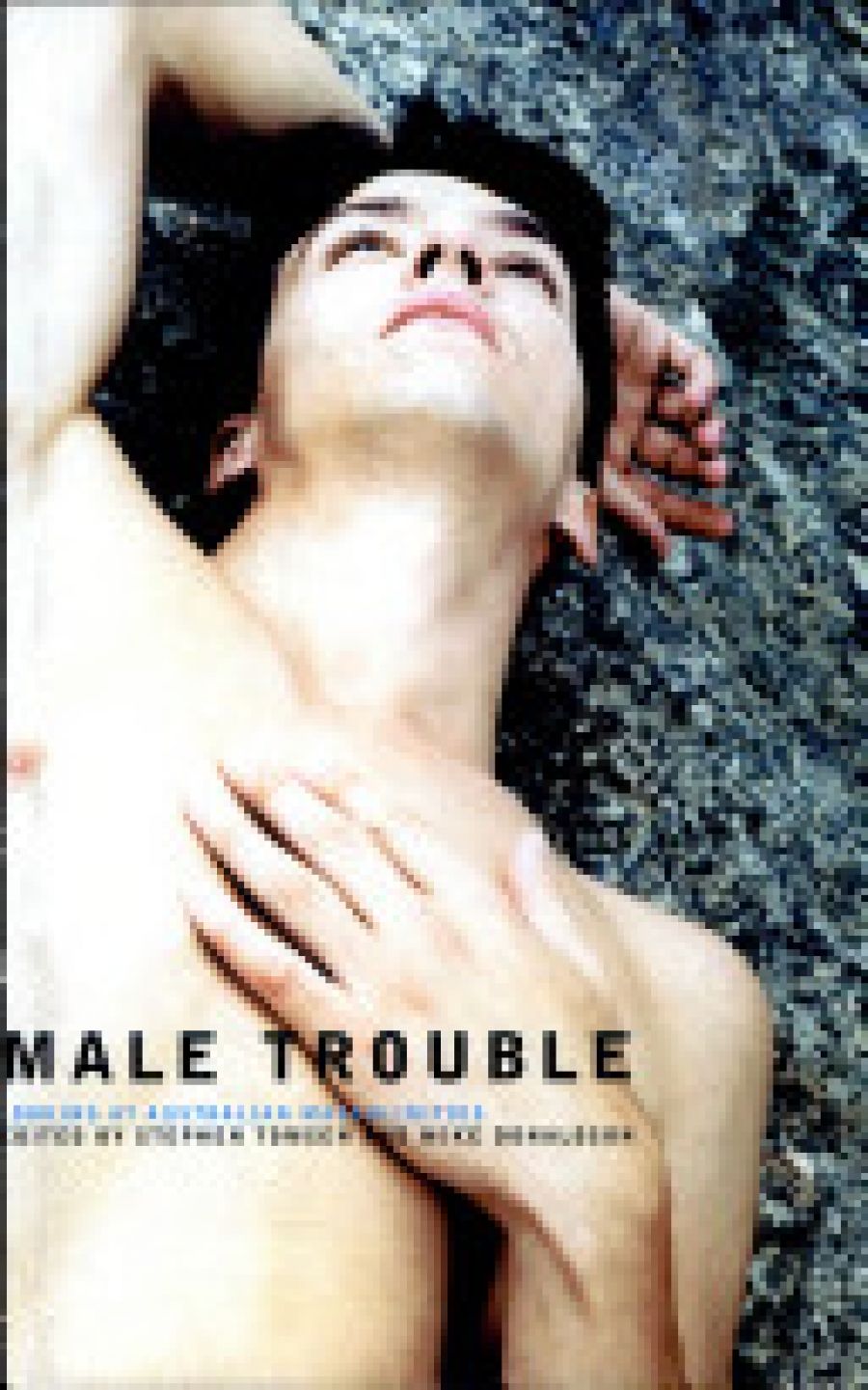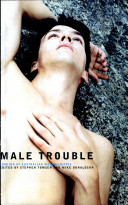
- Free Article: No
- Contents Category: Gender
- Review Article: Yes
- Article Title: Nasty Things
- Online Only: No
- Custom Highlight Text:
In his introduction to this collection of academic essays about different aspects and types of contemporary Australian masculinity – or, as the authors prefer, masculinities – R.W. Connell notes that: ‘It is now a familiar observation that notions of Australian identity have been entirely constructed around images of men.’ This is a familiar observation. Another old chestnut that better sums up recent discussions of masculinity and men, including this book, is that masculinity is in ‘crisis’, and that, at least in part, the solution lies in ‘problematising’, ‘deconstructing’, ‘destabilising’, and then collapsing’ it. It’s all, as such language makes clear, terribly sociological and cultural studies in approach. Which is not beyond interest, once one swims beneath the dense disciplinary jargon to the ideas below.
- Book 1 Title: Male Trouble
- Book 1 Subtitle: Looking at Australian Masculinities
- Book 1 Biblio: Pluto Press, $29.95 pb, 254 pp
- Book 1 Cover Small (400 x 600):

- Book 1 Cover (800 x 1200):

Interestingly, a more attentive reading of many of the chapters – each authored by academics from different institutions – reveals numerous possibilities for optimism. While some members of the Australian navy are doing their best to preserve the military as a place where dominant forms of masculinity are made, Katerina Agostino’s research reveals how others welcome women (though they often refuse to express their support for fear of being ‘deprived of their gender status as men’). In a chapter on the ‘masculinising institution’ of Australian Rules, Nikki Wedgwood speaks of several young men who refuse to denigrate women or to use violence on the field to subordinate other males and so assert their manhood. Indeed, as Gary Dowsett wisely notes in his discussion of ‘Masculinity, (homo)sexuality and contemporary sexual politics’, some men are responding as best they can to the challenges social and economic changes have presented to male power and privilege:
Of course, some men have not changed at all and others are too powerful to have to bother. But some sections of the male population have faced up squarely to the challenge of feminism and adjusted significantly. Not all men are unwilling to change, but the process of change is difficult, even when it is willingly pursued.
Male Trouble seems to see itself as advancing the project of ‘reforming masculinities’ in two ways. Firstly, by contributing to recent public debates about ‘men, boys and masculinities’, and, secondly, by presenting cutting-edge social research to assist in the development of ‘agendas of change in arenas from health policy to family violence to primary education’. Taken on its own terms, it seems important to ask how well it accomplishes these tasks.
I offer qualified ticks on both counts. As Connell notes, much public debate about men and masculinity is marred by reactionary ideas. The progressive outlook offered by the authors of this collection, who veer away from psychological explanations for ‘all the nasty things men do’ and focus instead on ‘institutions, power relations, and social inequalities’, warms the chill of the current individualistic and biologically determinant political landscape. In particular, the use by most authors of the terms ‘hegemonic’ to preserve the hierarchies among men and resultant differences in masculinities was welcome. l did wish the authors had put more effort into making their arguments in plain English. This was the case firstly because, in several instances, I suspected that jargon was not functioning in its proper role as in-group shorthand, but, rather, obscuring a lack of analytical precision and depth. As well, if – as Connell seems to want – masculinity research is to impact on policy, lucid writing and organisation of material is essential. Indeed, all readers, lay or academic, would have benefited from a standard format for each article in which the impetus for the work, and its place in the literature, its method, results and conclusions were all clearly laid out. Insofar as the collection makes no bones about being for academic audiences only, I would have preferred abstracts at the start of each piece and notes at the end of each chapter, rather than collected at the back of the book.
The collection does provide some new and interesting research. I was particularly fascinated by Poynting, Noble and Tabar’s discussion of ‘Protest masculinity and Lebanese youth in western Sydney’. The authors present fascinating extracts from interviews with seven Lebanese youth, which show how ‘protest’ masculinities are formed through intersections of class, gender and ethnicity. Mike Donaldson’s chapter, ‘Studying up: the masculinity of the hegemonic’, looks at the lives of ruling-class men – a rarity in sociological research, which specialises in what one researcher called ‘taking notebook and conscience in hand and going slumming’ – in order to investigate the workings of power from another angle, and to explore ‘the extent to which men of great power have some insight into the mechanics of its influence’.


Comments powered by CComment